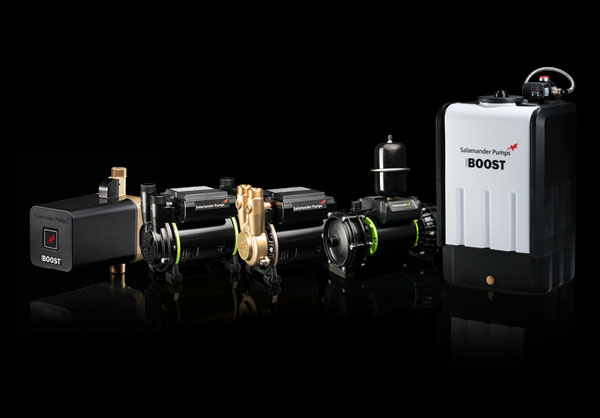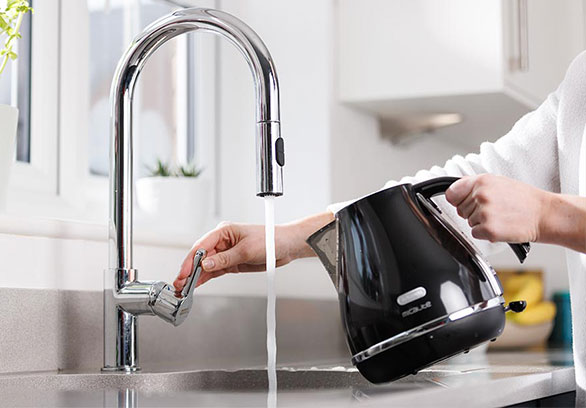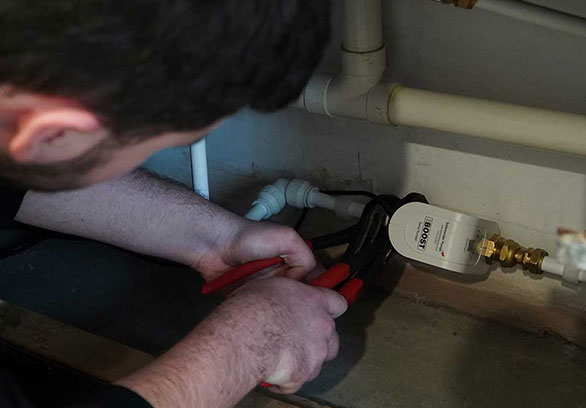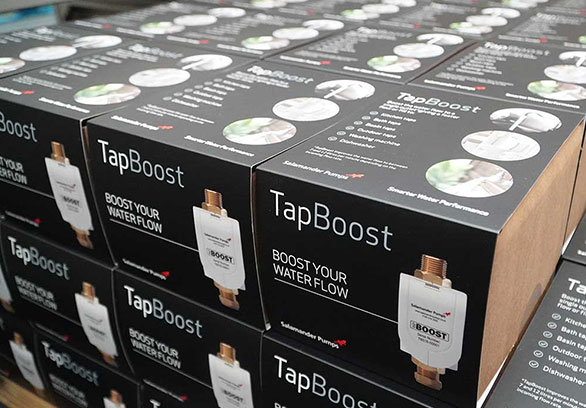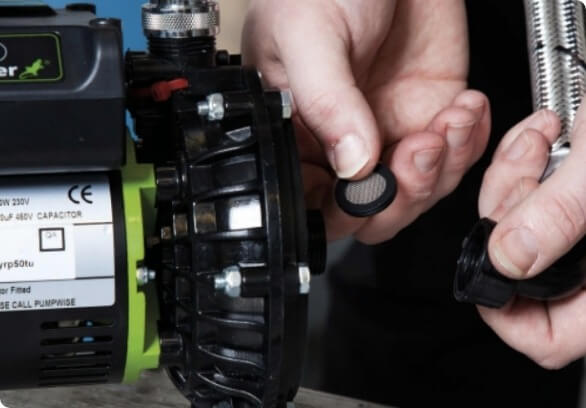Pre-installation
Water Hardness in the UK – Common Problems and Treatment
With almost 60%* of the homes in the UK classed as having hard or very hard water, outlets throughout the household are susceptible to limescale build-up, which looks unsightly and impacts the efficiency, performance, and lifespan of plumbing and heating systems, potentially leading to them failing completely.
As limescale build-up can lead to frustrations and disruptions, it’s essential for installers to gain a deep understanding of its root causes, recognise the adverse impacts it can cause, and become more educated on effective solutions that are available in the marketplace.
Understanding Limescale
Hard water contains high levels of minerals, including calcium bicarbonate which is dissolved in the water. When there is an increase in water temperature, the dissolved calcium bicarbonate comes out of solution to form scale deposits (calcium carbonate, in the form of calcite) on surfaces. This process can be observed in heat exchangers and heating coils.
As a result, more severe problems than visible scale build-up can occur. Limescale also harms the efficiency and lifespan of water heaters, dishwashers, and washing machines. As a hard, deposit that can build up inside pipes and appliances and if left untreated can lead to major costs for repairs and replacements, limescale build-up can lead to:
- Reduced energy efficiency: appliances like water heaters need to work harder to heat water through clogged pipes, driving up your energy bills.
- Shortened appliance lifespans: limescale build-up can damage and eventually break pumps, water heaters, dishwashers, and washing machines.
- Costly repairs: blocked pipes and damaged appliances often require costly repairs, adding to the financial burden of limescale.
Limescale will affect homeowners in many ways. When washing their hands or doing other household chores, they may notice the effects. Scale build-up can also make laundry feel rough, causes fabrics to fade too soon, and prevents showers from working as well as they should. Cleaning also becomes more of a chore with hard water. People have to use extra effort and harsh chemicals to cut through the mineral barrier left by the water.
Neglecting to seek remedies for hard water issues can lead to potential damage to plumbing systems, decreased appliance efficiency, and increased maintenance costs.
An effective and low-cost solution to for installers that operate in hard water areas are water conditioners, which come in a wide range of sizes and are designed prevent limescale build-up in outlets throughout the entire household.
How Do Water Conditioners Work?
Installers can select the most suitable water conditioner from a wide range of options available on the marketplace, ensuring optimal fit for each application during the installation process.
For instance, the recently launched line of Salamander Pumps’ water conditioners operate without the need of a power supply. Coming in three different sizes, they use a non-sacrificial lead-free alloy core with a special surface. The core is predominantly a Copper/Zinc alloy, but what makes it unique is the semi-precious content, which contains three additional metals.
When the water conditioners are installed, nothing is added or removed to the water. As water passes over the water conditioner core, a catalytic reaction takes place which causes carbonic acid to precipitate and the chemical composition of limescale (Calcium Carbonate) to change form from Calcite to Aragonite. This process occurs in a similar way to how water can change to steam. Aragonite is less stable and more soluble than calcite.
This prevents scale deposition and, in many cases, gradually absorbs pre-existing scale. The result is chemical-free protection against limescale build-up in hard water areas.
This innovative approach not only inhibits scaling but also gradually removes existing build-up, restoring plumbing systems to their optimal state.
Installation and Integration
As a versatility accessory, water conditioners can be easily installed when integrating with an existing plumbing system. Whether you’re retrofitting a residential property or working on something brand new, these compact and versatile units can be installed with minimal disruption.
Water conditioners are sized based on water flow, which is why it’s important to check the incoming water flow to choose the correct model.
For instance, Salamander Pumps’ single point water conditioner, featuring ½” male parallel threads at one end and ½” female parallel threads at the other, is easily installed to shower heads, suitable for flow rates between 1 and 15 L/min. This accessory is also suitable for mixer valves, washing machines, or dishwashers.
Whereas, the ½” water conditioner requires flow rates between 3 and 25 L/min, and is supplied with ½” tapered thread male connectors to allow the installer to connect a compression fitting to them.
The ¾” model needs flow rates between 24 and 54 L/min, supplied with ¾” tapered thread male connectors. And 360x42mm 1″ BSP-T water conditioner is suitable for flow rates between 45-90 L/min.
All Salamander Pumps’ whole house water conditioners are supplied with brass fittings.
Salamander Pumps’ water conditioners provide single point or whole-house water treatment to prevent limescale build-up, maintain appliance efficiency and come with 10-year warranty.
With no maintenance or ongoing costs, and no need for electrical power, water conditioners are an ideal solution for minimising the impact of hard water.
*DWI UK Water Hardness Map
